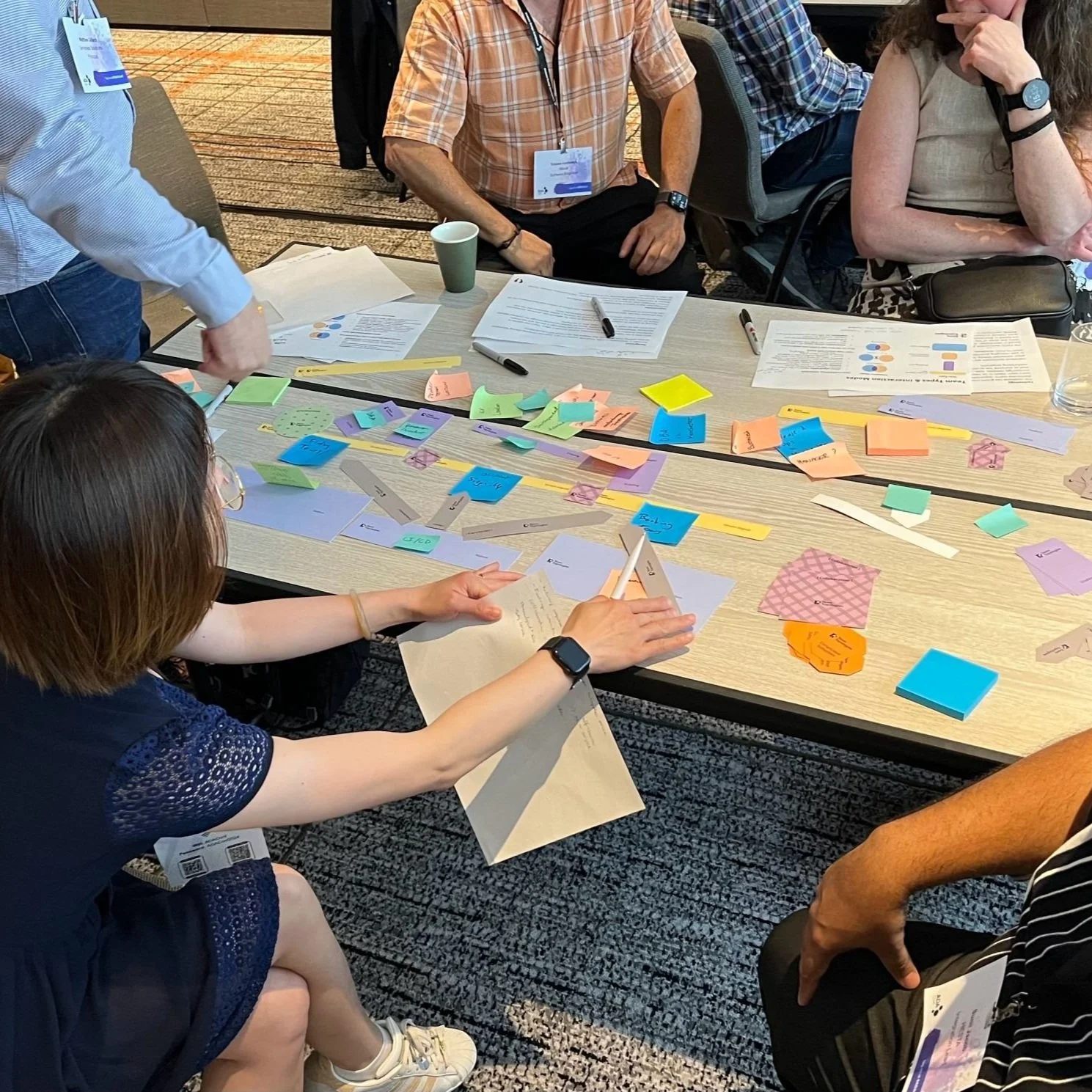Team Topologies: How to structure your teams using nine principles and six core patterns for better value
The organizations I've seen succeed with Team Topologies share one trait: they commit to the journey and don't expect overnight transformation. They start small, show results and gradually expand.
Team Topologies isn't a silver bullet. It's an approach for thinking clearly about how work flows through your organization. Applied with intelligence and patience, it's the most effective approach for building organizations that deliver consistently without burning out.
Most organizations will continue plugging along with broken structures, wondering why they can't keep up with more nimble competitors. The smart ones will recognize that how they organize their teams is as important as which technology they use or what products they build.
From Call Centers to Team Topologies: Transforming Financial Services Through Design Thinking
Financial institutions today face unprecedented pressure to become more agile and customer-centric, yet many struggle with deeply entrenched organizational patterns that resist change. Through insights from Luke McManus, Team Topologies Asia Pacific lead, we explore how design thinking and modern team organization principles can help break through these barriers.
Project to Product Transitions: Challenges & Solutions Nobody Talks About
The transition to a product operating model requires nuanced thinking and careful consideration of organizational context. Success lies not in converting everything to products, but in applying thoughtful product thinking where it adds value. By focusing on value streams, maintaining appropriate team boundaries, and ensuring that platforms are treated as products, organizations can create sustainable and effective product-centric operations.
While product thinking is powerful, it's not a universal solution. The goal is to accelerate value delivery and maintain sustainable operations, whether through products or other organizational structures. By avoiding the common pitfalls and focusing on true value delivery, organizations can build more effective and resilient operating models that serve today’s needs and evolve for tomorrow.
Building Bridges: How Team Topologies Can Transform Generative AI Integration
Applying a Team Topologies approach in contexts that are introducing generative AI involves structuring your teams and their interactions to maximize the benefits of generative AI while minimizing potential challenges.
Read the article to find out how you can implement this.
The Future of Team Topologies: When AI Agents Dominate
The future of Team Topologies, dominated by AI agents, presents both opportunities and challenges. As AI continues to evolve, organisations must navigate this new landscape thoughtfully, ensuring that technology enhances rather than diminishes the human experience at work. By reimagining principles like Conway's Law, Dunbar's Number, and context switching in an AI-driven world, we can create teams
The Real Value of Team Topologies
What is Team Topologies? Is it a framework? Is it a set of principles? How can you start using it without having a big-bang, top-down approach? And is that ever the right approach?
The Synergy of Technology and People: How Team Topologies is Revolutionizing Companies
In a recorded interview from the Acceler8IT Conference in Krakow, Matthew Skelton, co-author of Team Topologies, sat down with Sabine Wojcieszak from getNextIT to discuss the practical and human-centered value of Team Topologies in modern workplaces. Their conversation delves into the potential of this flexible framework, which promotes adaptive team structures, reducing cognitive load, and nurturing a sense of security and fulfillment at work.
Shifting from projects to products: Insights from our open forum
In our recent Project to Product Open Forum, we gathered leaders, practitioners, and transformation experts to explore the challenges and opportunities of moving from a project-centric to a product-centric way of working. The conversation couldn’t have been more timely; with only 2% of organizations fully mature in these transformation attempts and with a failure rate of 70% for business transformations, the shift is proving to be more difficult than anticipated for many organizations.
The most important part of Team Topologies is also the one most people overlook
People should look at Team Topologies as a way of thinking or a pattern language. Team Topologies aims to help leaders design for a fast flow of value. It allows you to design a team-of-teams organization, which, combined with a relevant decoupled architecture of products and the appropriate processes (think Continuous Delivery as one example), allows even big organizations to achieve fast flow of value. Unlike organizational charts, the resulting diagrams are just a starting point and must continuously evolve as the organization grows and changes along with the environment in which it operates. This is why we often tell people to consider Team Topologies more like Design Thinking, i.e., an iterative and continuous process that helps you understand complex challenges and find optimal solutions.
Achieving Business Agility Through Kanban and Team Topologies
This article explores the synergy between the Kanban method and Team Topologies to enhance work processes in knowledge work organizations. By making policies explicit, both methodologies facilitate clearer team interactions and improved workflow management. Discover how integrating these approaches can lead to evolutionary change and greater business agility.
From Monolith to Agility: A Team Topologies Journey in a Leading Financial Institution
This short case study describes a personal journey undertaken as a Team Topologies Advocate at a global financial services organization.
Adopting an Intentional Strategy for Managing Team Cognitive Load
I (João Rosa) recently created an online cohort-based course, Effectively Manage Team Cognitive Load. Since the release of Team Topologies book, I have adopted its language and principles in my consultancy practice, supporting organizations in their digital transformation journey. I’ve noticed in the field that more people are aware of the effects of unmanaged Team Cognitive Load in their teams and organizations, using the concept presented in the Team Topologies book to drive changes in their organizations.










